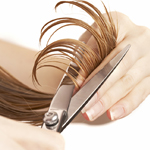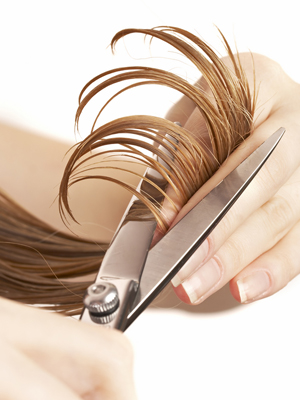You know the signs: dullness, split ends that are visible from a mile away and texture best described as a bird’s nest. Damaged and unhealthy hair is obvious and can take away from your otherwise well-maintained appearance.
There are many factors that can cause blah, brittle locks, from harsh winter weather to heat damage, over-processing or going too long without a trim. Identifying your harm-factor can keep locks looking healthy long-term, but there are also fast fixes for nurturing hair back into shape. And if you’re really unsure, let your stylist be your guide.
Care
We’ve been trained to think that shampooing every day is damaging, but it depends on your hair type. Fine, straight hair can accrue oil rapidly, which requires frequent”maybe even daily”washing.
Those with dry, curly hair (especially black women) can stick to a once-a-week lather since it takes longer for oil to migrate from scalp to ends. If you must wash daily, it’s not the end of the world: just use a mild shampoo to cleanse the roots and try conditioning the ends to retain shine. If you’d like to go longer between washes, oil-absorbing dry shampoo works wonders.
Products
Shampoo, conditioner, deep-conditioner, hydrating treatments, hair oils¦ what do they all mean? In general, everyone needs a pH-balanced, moisture-intensive shampoo for optimal cleansing. Replacing weighty conditioner with a leave-in version can be an option for fine, limp hair. Or, condition just the ends instead of root-to-tip.
Choose a reparative masque”Shu Uemura Art of Hair has a luxe and effective line”that’s specific to your hair type and apply it at least once or twice a week. And if you have a problem scalp (often the cause of other hair woes), try Schwarzkopf Professional’s BC Hairtherapy line, which features a Deep Cleansing Pre-Shampoo Peeling exfoliator. Lastly, if you aren’t using an argan oil, like Moroccanoil, then start! Massage it in post-wash”it can elevate locks from lacklustre to lush.
Heat
The great flatiron revolution of the 2000s led to a legion of women with stick-straight”and heat-damaged”hair. Luckily, manufacturers are creating superior products to protect the hair while styling.
As a general rule, too much heat is never a good thing, but there are ways to make it work. Virtually every hair-care company makes a cuticle-sealing heat serum, so experiment and find one that works for you. Blow-dry until your hair is only 75 to 90 per cent dry, leaving some dampness, to avoid drying out the hair shaft. And flat iron manufacturers? Well, they’ve responded: virtually all quality flat irons sold today have ceramic tourmaline plates that seal in moisture and don’t snag while straightening.
Colour
If your hair is in bad shape, ditch the box colur and head to the salon. Damaged hair is more porous than healthy hair, meaning it absorbs colour faster”leading to even more damage. In general, low ammonia hair colour is best, but formulations vary for different results.
When you are at the salon look out for INOA, the latest innovation from L’Oré©al Professionnel. It’s an industry breakthrough because it uses an oil-delivery system, instead of ammonia, to get colour to the centre of the hair fibre, resulting in the preservation of natural lipids and less irritation to the scalp.










